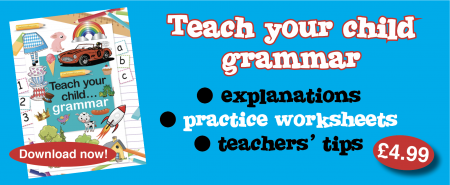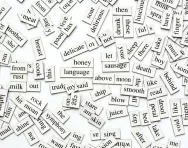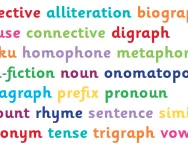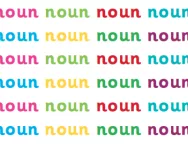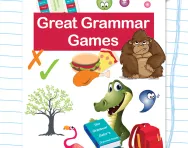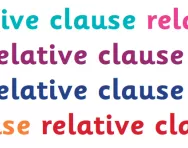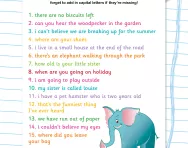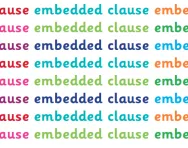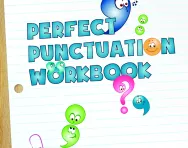Important update from TheSchoolRun
For the past 13 years, TheSchoolRun has been run by a small team of mums working from home, dedicated to providing quality educational resources to primary school parents. Unfortunately, rising supplier costs and falling revenue have made it impossible for us to continue operating, and we’ve had to make the difficult decision to close. The good news: We’ve arranged for another educational provider to take over many of our resources. These will be hosted on a new portal, where the content will be updated and expanded to support your child’s learning.
What this means for subscribers:
- Your subscription is still active, and for now, you can keep using the website as normal — just log in with your usual details to access all our articles and resources*.
- In a few months, all resources will move to the new portal. You’ll continue to have access there until your subscription ends. We’ll send you full details nearer the time.
- As a thank you for your support, we’ll also be sending you 16 primary school eBooks (worth £108.84) to download and keep.
A few changes to be aware of:
- The Learning Journey weekly email has ended, but your child’s plan will still be updated on your dashboard each Monday. Just log in to see the recommended worksheets.
- The 11+ weekly emails have now ended. We sent you all the remaining emails in the series at the end of March — please check your inbox (and spam folder) if you haven’t seen them. You can also follow the full programme here: 11+ Learning Journey.
If you have any questions, please contact us at [email protected]. Thank you for being part of our journey it’s been a privilege to support your family’s learning.
*If you need to reset your password, it will still work as usual. Please check your spam folder if the reset email doesn’t appear in your inbox.
Good grammar made easy

Linguists often bemoan the decline of grammar teaching in British schools, relating stories of children who don’t know what a noun is, and have no idea what to do with an apostrophe.
Every generation tends to think that standards have dropped, while in fact there is little evidence of knowledge of written grammar having changed much. (And, unfortunately, many adults are as confused by apostrophes as children are!) Under the new primary curriculum (revised in 2014), grammar teaching has been awarded much more importance, so your child will become an impressive grammarian as they prepare for the KS2 Spelling, grammar and punctuation test in the Year 6 SATs.
Getting to grips with grammar
Laying the foundations for good grammar is important for your child’s education and life skills. Think of the number of university courses which require essays to be written and the importance of grammar in job applications.
As adults, many of us take correct grammar for granted. So how can you support your child and help them learn to use it as instinctively as you do? Some of the grammar topics your child will cover in primary school are:
- Contracted words
- Clauses
- The active and passive voice
- Subject and object in a sentence
- Parts of speech: nouns, verbs, adjectives, adverbs, pronouns, prepositions and conjunctions
- Multi-clause sentences
Simple tips for apostrophes
The apostrophe must be the most dreaded of punctuation marks, and the one which causes the most confusion. Apostrophes tend to be overused and even adults write CD’s instead of CDs and 1970’s instead of 1970s.
So does the apostrophe go before the ‘s’ or after? Does it even go in at all? And does it matter?
Yes, it most certainly does. Take this example:
Last night I went to my grandfathers.
This implies that the writer has two grandfathers who live together, as without an apostrophe the word becomes a plural. It should be:
Last night I went to my grandfather’s.
The easiest way to help your child understand the rule is to simplify it; encourage them to think ‘possessive not plural’. So you have five carrots, ten books, three cars; but Karen’s carrots, George’s books, Carol’s cars.
Of course this doesn’t take into account the possessive plural, such as teachers’ holidays, and the boys’ bikes, but if children understand the first rule, the second one will become easier to grasp.
An apostrophe is also used where a letter has been omitted, which clears up confusion over it’s and its. Remind your child that it’s is short for it is.
For example, read this sentence:
The tiger looks after it’s young.
Remembering the rule, it is easy to see that 'The tiger looks after it is young' is wrong (it means 'The tiger looks after it is young'). It should be:
The tiger looks after its young.
You'll find details of how apostrophes are taught in primary school in our parents' guide to apostrophes.
Grammar games
Here are a couple of games which you can play to help reinforce what your child is learning at school:
Grammar Spy
This is a grammar version of ‘I Spy’ which can be played anywhere and which younger brothers and sisters can join in with. Instead of saying, "I spy with my little eye something beginning with..." change it to, "I spy with my little eye a noun beginning with..."
Starting with a noun is easiest because it’s so similar to the original game, but you can also try saying, "I am thinking of a verb/adjective/adverb beginning with…".
Apostrophe Action
Make fifty cards with words that don’t have an apostrophe but should have – so dont, Katherines, the dogs bone, lets. Also include some that don’t have apostrophes – so CDs, 1950s etc. Put them in a pile. Say a phrase or sentence with that word, and players have to place the apostrophe. If they get it right they win the card. The winner is the one with the most cards at the end.
